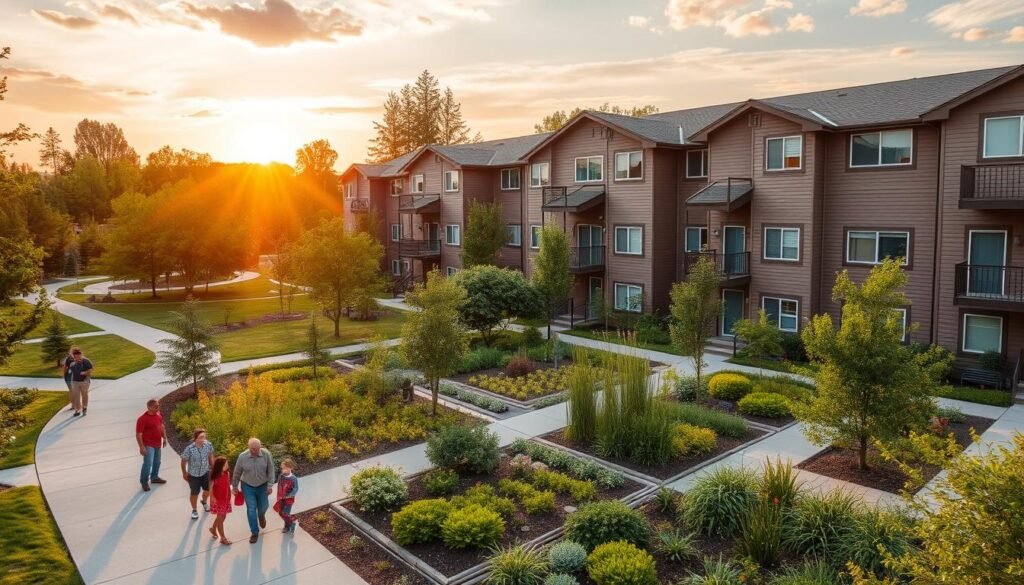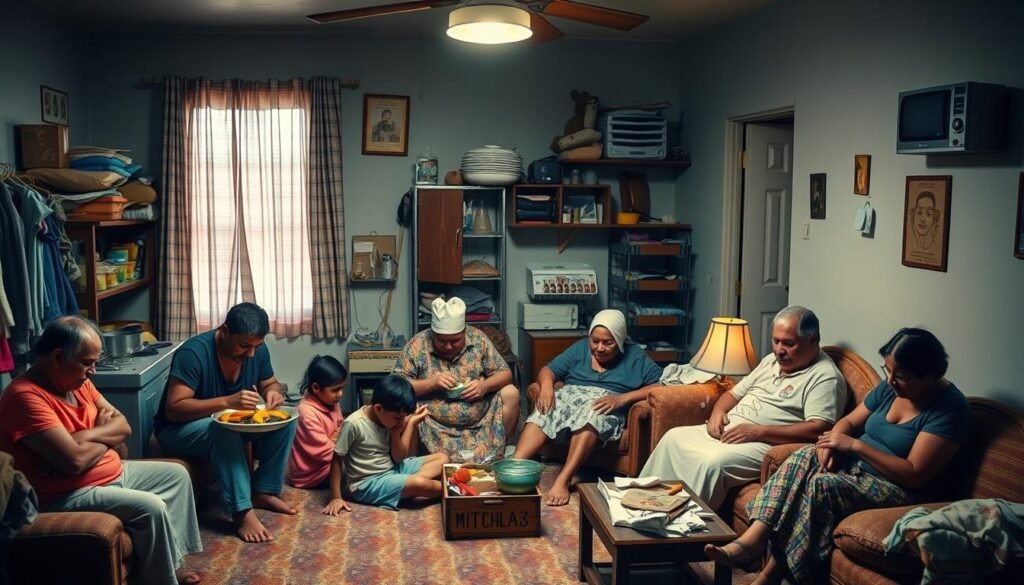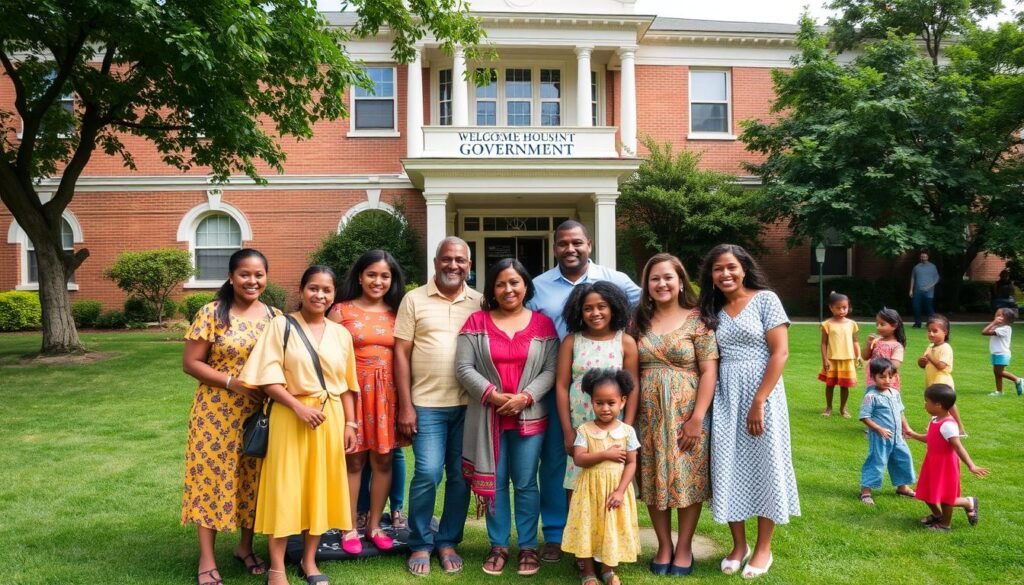The Australian government is giving over five million Aussies a helping hand. Starting 20 September 2024, they will get more money in their government support payments. This includes increases for age pensions, disability support pensions, carer payments, and a 10% rise in Commonwealth Rent Assistance.
This move is to help those who are struggling with the rising cost of living. Age pensioners will get an extra $28.10 each fortnight if they’re single, and $42.40 if they’re in a couple. The Disability Support Pension and Carer Payment will also see a boost.
Major highlights
- Over 5 million Australians will benefit from increased government support payments starting 20 September 2024
- Age pensioners will see a $28.10 fortnightly increase for singles and $42.40 for couples
- Commonwealth Rent Assistance will rise by 10% with additional indexation
- Disability Support Pension and Carer Payment will also receive a boost
- The indexation aims to provide cost-of-living relief to vulnerable groups
Last month Payment Increases
Over five million Aussies will get a financial boost starting September 2024. This increase will help many, including those on age pensions, disability support pensions, and JobSeeker. It’s a big relief for many.
Key Beneficiary Groups Affected
- Age pensioners will get an extra $28.10 a fortnight for singles and $42.40 for couples. They are the biggest group to see an increase.
- Disability Support Pension and Carer Payment recipients will also get a $28.10 boost. This makes their total fortnightly payment $1,144.40 for singles and $862.60 for each member of a couple, including the energy supplement.
- JobSeeker Payment for single individuals aged 22 or over with no children will rise by $15.30 to $786.80 per fortnight.
Timeline of Implementation
The payment increases will start on 20 September 2024. This will help those who rely on government support a lot.
“These indexation changes will make a real difference in the lives of millions of Australians, helping them keep pace with the rising cost of living.”
Age Pension and Disability Support Payment Changes
The September 2024 indexation will significantly boost two key government support programs. These are the Age Pension and Disability Support Pension. This change aims to help vulnerable Australians deal with the cost of living increase.
Single Age Pension recipients will see their fortnightly payment rise by $28.10. This will make their total payment $1,144.40. Couples on the Age Pension will get a combined increase of $42.40. Their total fortnightly payment will then be $1,725.20.
Disability Support Pension and Carer Payment recipients will also get a boost. Single recipients will receive $1,144.40 per fortnight. Each member of a couple will get $862.60.
“These increases to the Age Pension and Disability Support Pension are vital for our most vulnerable Australians,” said Social Services Minister Amanda Rishworth.
The government is committed to keeping indexation and rent assistance in line with rising costs. This ensures that government housing support meets the needs of Aussie pensioners and those with disabilities.

Understanding Centrelink Rent Assistance Indexation
The cost of living in Australia keeps going up. To help, the government is boosting Centrelink rent assistance. From 20 September 2024, the maximum rent subsidy will increase by a lot.
Maximum Rate Increases Explained
Single Aussies renting alone without kids will get an extra $23 a fortnight. This brings their rent help to $211.20. Families with one or two kids will get even more, $27.02 extra a fortnight.
This increase is a 10% boost. It’s part of a 45% rise in rent assistance rates under the Albanese Government. This change happened from May 2022.
Payment Calculation Methods
Rent help is paid every two weeks after the fact. It’s based on the rent the household pays. Couples get a combined amount if both are eligible. If one isn’t, the eligible partner might get half.
Eligibility Criteria Updates
- Rent help is for those on Age Pension, Disability Support Pension, JobSeeker, and Family Tax Benefit.
- But, it’s not for homeowners, those in subsidized aged care, or tenants of state/territory housing.
- Families with kids can get more rent help. Payments range from $248.22 to $280.42 a fortnight, based on size and rent.
These updates aim to ease the pressure of rising rents for Aussies. They’re part of the government’s effort to help.
| Recipient Type | Current Maximum Fortnightly Rate | Projected Maximum Fortnightly Rate (Post-Increase) |
|---|---|---|
| Single, no children | $211.20 | $234.20 |
| Single, no children (sharer) | $140.80 | $155.80 |
| Partnered, no children (combined) | $199.00 | $218.00 |
| Member of a couple, no children (special cases) | $211.20 | $234.20 |
| Member of a couple, no children (temporarily separated) | $199.00 | $218.00 |
| Families with 1-2 children | $248.22 – $280.42 | $275.24 – $307.44 |
Impact on Single Recipients and Families
The upcoming changes will help low-income tenants a lot. It will make rent more affordable and more people can get rental help. Single JobSeeker recipients without kids will get an extra $15.30 each fortnight. This will make their total payment $786.80, including the Energy Supplement.
Families with one or two kids getting rent assistance will also get more. They will receive an extra $27.02 every fortnight. These increases are to help with daily costs and ease the financial stress for single people and families in Australia.
“More than five million Australians will benefit from the increases across government pensions and benefits like the Age pension, Carer pension, Parenting payment, Jobseeker payment, and Rent assistance.”
The 10% increase in rent assistance will be a big help. It’s aimed at those who are finding it hard to pay for housing. Right now, one in three low-income renters don’t get any Commonwealth Rent Assistance (CRA). And three out of ten who do get it don’t get the maximum amount.

While these changes are good, it’s worth thinking about how they might affect rent prices. In some places, rents might go up by about $3 a week. But the government is focused on helping low-income tenants as much as it can.
JobSeeker Payment Adjustments and New Rates
The Australian government has made big changes to the JobSeeker payment. Single JobSeeker recipients will get an extra $15.30 every two weeks. This brings their total to $771.50, including the Energy Supplement.
Those who can work between 0 and 14 hours a week will get more. They will now receive $849.50 every two weeks. This includes the Energy Supplement and Pharmaceutical Allowance, an increase of $71.20.
Changes for Partial Capacity Workers
The new payment for JobSeeker recipients with partial capacity to work is a big help. It recognizes the challenges they face in finding jobs. This change aims to support them financially as they look for work.
Energy Supplement Inclusions
The Energy Supplement is included in these new rates. It helps with the rising cost of living. This ensures welfare recipients can manage their household expenses better.
These changes to the JobSeeker payment are part of a bigger plan. The government wants to help low-income Australians and those struggling with living costs. The goal is to strengthen the social safety net and improve the lives of the most vulnerable citizens.
| Payment | Previous Fortnightly Rate | New Fortnightly Rate | Increase |
|---|---|---|---|
| JobSeeker – Single | $756.20 | $771.50 | $15.30 |
| JobSeeker – Partial Capacity (0-14 hours) | $778.30 | $849.50 | $71.20 |
“These changes to the JobSeeker payment, combined with the indexation of other welfare benefits, are part of the government’s broader efforts to address the needs of low-income Australians and those struggling with the cost of living.”
Parenting Payment Single Recipients Benefits
The Australian government has made big changes to help single-parent families. Starting in July 2023, over 91,000 single parents, mostly women, will get more support. They will get Parenting Payment Single until their youngest child is 14.
This change is to help these families during a key time. It’s a big step to support them financially.
From July 2023, PPS recipients will get $19.80 more each fortnight. This will make their total payment $1,026.30, including supplements. The government wants to help with the rising cost of living.
This increase is for low-income tenants and single-parent families. It’s part of the government’s effort to give them the government housing support they need.
“The government’s indexation efforts are vital for vulnerable groups, like single-parent families, in tough economic times,” said Amanda Rishworth, the Minister for Social Services.
This change will help single-parent families a lot. It will make their financial situation better. The government wants to ease their financial stress.

Indexing social security payments helps over five million Australians. It’s a key part of the government’s plan to tackle the cost of living. By adjusting payments with inflation, the government aims to protect its most vulnerable citizens.
Commonwealth Rent Assistance 10% Boost Explained
The Australian government has increased the Commonwealth Rent Assistance (CRA) by 10%. This move aims to help those finding it hard to afford rent in the rising market.
Single Tenant Benefits
Single tenants with no kids will get an extra $23 every two weeks. This brings their total CRA to $253 every two weeks. It’s a big help for those living alone.
Family Assistance Rates
Families with one or two kids will also see a big jump in their rent subsidy. Their CRA will go up by $27.02 every two weeks. This increase helps families with the cost of housing payment rates.
These changes, along with regular indexation, are a big step up in rental support for Australians. It’s a big change for those renting homes.
| Beneficiary Group | Fortnightly Increase | New Fortnightly Rate |
|---|---|---|
| Single Tenants (No Children) | $23 | $253 |
| Families (1-2 Children) | $27.02 | $297.02 |
The 10% CRA boost, along with other budget measures, aims to support Australians in tough economic times.
“The CRA increase, along with indexation, will make a real difference in the lives of Aussies struggling to keep a roof over their heads.”
Government’s Cost of Living Relief Measures
Australians are facing a tough time with the rising cost of living. The Albanese Labor Government has introduced several measures to help. These efforts aim to give more money to those who need it most, tackling issues like rental costs and welfare benefits.
cost-of-living relief measures include:
- Tax cuts for all 13.6 million Australian taxpayers from July 2024, with an estimated average benefit of around $1,650 for women.
- A $3.5 billion Energy Bill Relief Fund to provide $300 electricity bill rebates to households and $325 rebates to small businesses during the 2024-25 financial year.
- A 15% boost to the maximum rate of Commonwealth Rent Assistance, amounting to a $2.7 billion allocation over 5 years.
- A $40 per fortnight increase proposed for the JobSeeker Payment and other working-age payments, the first substantial raise outside of CPI adjustments in 2021.
- Expansion of the Home Guarantee Scheme to build 1.2 million homes by the end of the decade, with an increase in rent assistance eligibility.
- A freeze on maximum PBS prescription costs at $31.60 until January 2026, benefiting over one million Australians.
Social Services Minister Amanda Rishworth says these measures show the government’s dedication to helping Australians. The indexation of payments and targeted boosts aim to ease financial burdens on vulnerable individuals and families.

“We’re taking action to ease the burden on households and ensure all Australians have the support they need to get through these tough times,” said Minister Rishworth.
Changes to Income and Asset Limits
The Australian government has made changes to income and asset limits for support programs. These updates affect pensioners, those on income support, and those getting rental assistance. The changes mean some people might now qualify for more help.
New Thresholds and Caps
The income and asset limits for Age Pension have gone up. For singles, the income limit is now $2,500.80 a fortnight. For couples, it’s $3,822.40. Illness-separated couples now have a limit of $4,949.60.
Asset limits have also increased. Single homeowners can now have up to $9,250 in assets. Single non-homeowners, couples, and illness-separated couples have seen similar increases.
Assessment Criteria
To get a full Age Pension, you must have less than $314,000 in assets (excluding your home). For couples, the limit is $470,000. For a part pension, the limits are higher, up to $1,233,000 for illness-separated couples.
The government is also helping with living costs. They’ve frozen social security deeming rates. You can check the Department of Social Services website for more information on these changes.
